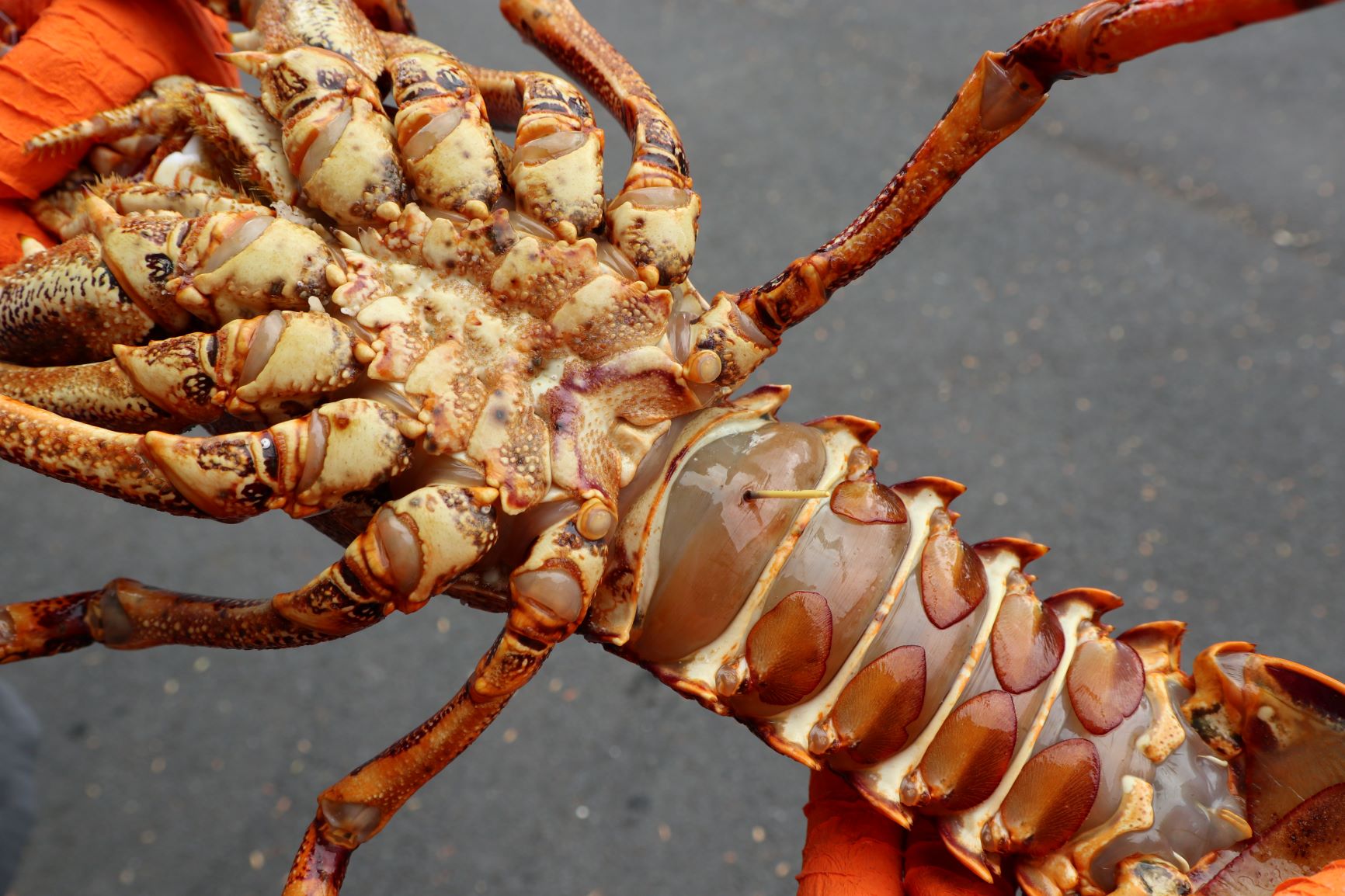Model Parameters

A tagged male lobster.
Model Parameterisation
The rock lobster stock assessment model is updated annually by IMAS researchers with new catch and effort data from fishers’ logbooks, new recreational catch data and new length-frequency data from catch sampling. Other model parameters are periodically reviewed including growth estimates from the mark-recapture program.
Model Assumptions
Projections of the stock made for the purposes of this report (and evaluating the LRP and TRP) make a series of assumptions including:
- future recruitment assumed to follow that observed from 2000 onwards noting that undersize length frequency data also contributes information on future recruitment in projections;
- recreational and illegal catches are constant through time at pre-COVID levels;
- no loss of productivity through expansion of urchin barrens;
- no loss of productivity through increase in natural mortality (e.g. through increase in octopus mortalities); and
- all other management rules are held constant (including commercial scale translocations operations that commenced in 2012) in future years.
These assumptions and settings were made as they were considered to represent the best and most likely settings for examining future trends. Uncertainty around the model assumptions are acknowledged and included in the decision-making process through the design of reference points. The probability of meeting reference points in the future is required to be 70% for a target reference point and 90% for a limit reference point. This conservative approach provides protection against declines in productivity that could occur through processes such as expansion of urchin barrens, increase in natural mortality or decline in recruitment.
Recruitment Assumptions
The inclusion of values of possible future recruitment is required for the model to project forward in time and provide researchers with future biomass estimates. The relationship between egg production and recruitment is highly dependent on environmental variables and poorly understood. However, the best indication of future recruitment is given by historic recruitment estimates. The model estimates historic recruitment data using commercial catch data and length-frequency data collected by observers, scientific sampling and the research pot program. An important consideration when projecting forwards is the range of years selected to represent historic recruitment. Characteristically, recruitment to this fishery occurs in infrequent large pulses with low levels of recruitment between these pulses. The model also uses information from undersize sampling, which gives some guidance on probable future recruitment.
If the recruitment process is not undergoing a fundamental change, using all years for which reliable recruitment data is available is the preferred option as this will provide the best estimate. Alternatively, if the recruitment process has fundamentally changed (for example due to changing oceanic currents) it will be preferable to estimate recruitment from more recent data. The potential pitfall with selecting only a short period of recent years is that a series of years with poor recruitment may be interpreted as a change in the recruitment process when it may simply be a ‘run of bad luck’. In this case using more recent low recruitment estimates may result in inappropriate management changes.
Very similar reductions in recruitment have taken place across all southern rock lobster jurisdictions. Consequently, the Victorian, South Australian and Tasmanian model all use recruitment estimates from 2000 onwards to the most recent reliable recruitment estimate for that jurisdiction. In this stock assessment 2014 recruitment was the last year that was included. In addition to these recruitment estimates, the model uses undersize size structure data to inform likely recruitment in the short-term.



